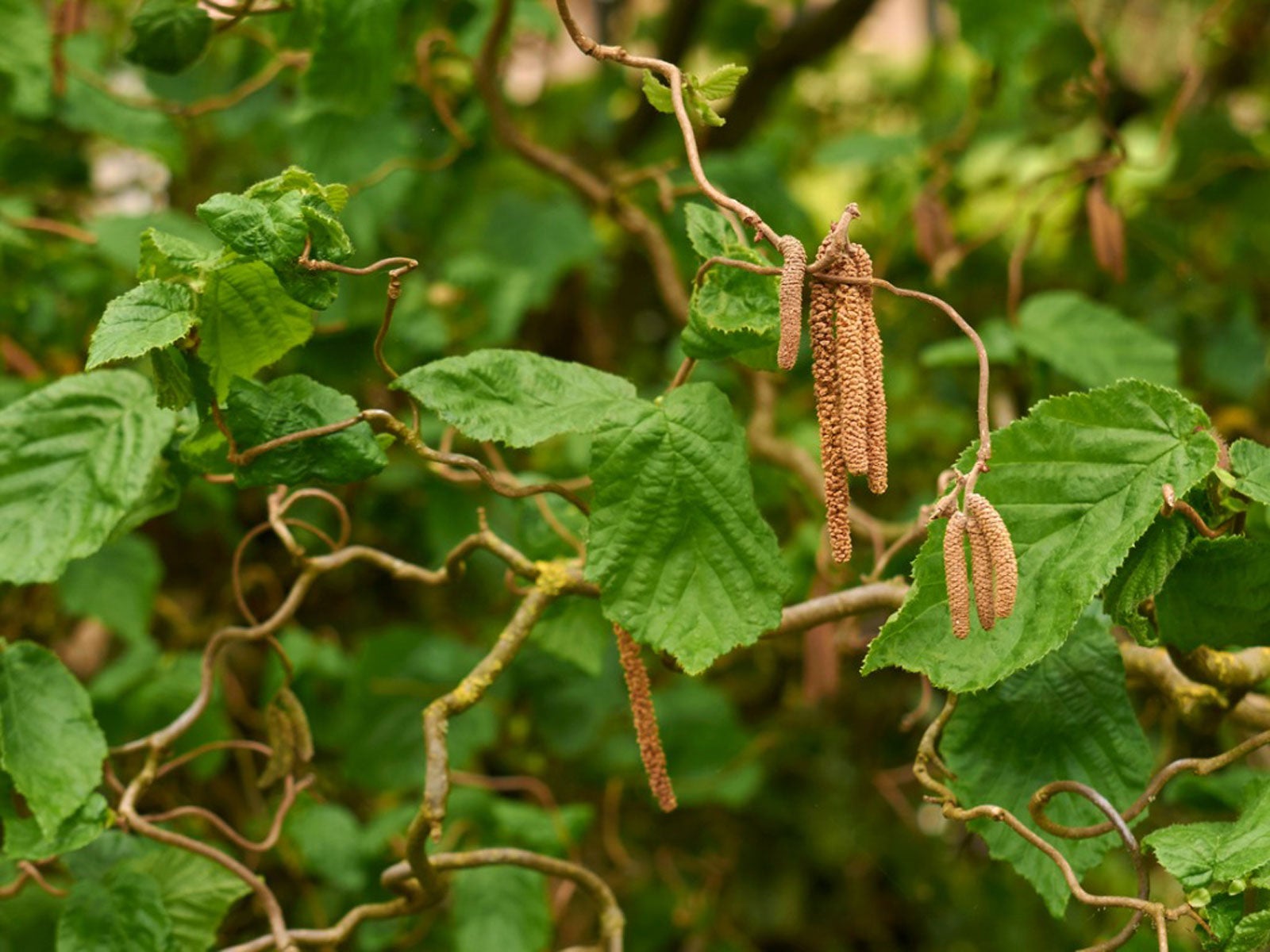Twisted Hazelnut Trees – How To Grow A Contorted Filbert Tree


These shrubs or small trees – called both contorted filbert trees and twisted hazelnut trees – grow upright on curiously twisted trunks. The shrub immediately catches the eye with its unique features. Caring for a contorted hazelnut tree (Corylus avellana 'Contorta') is not difficult. Read on for more information about how to grow contorted filbert trees.
Contorted Filbert Trees
The trunks of twisted hazelnut trees/contorted filbert trees grow to 10 or 15 feet (3-4.5 m.) tall and are so twisted that gardeners give the tree the nickname "Harry Lauder's Walking Stick." The branches are also uniquely curled and twisted. The other ornamental feature about the trees is the male catkins. They are long and golden and hang from the branches of the tree beginning in winter, providing visual interest long after leaf drop. In time, the catkins develop into edible hazelnuts, otherwise known as contorted hazelnut tree nuts. The leaves of the species tree are green and toothed. If you want more pizazz in the summer, purchase the cultivar “Red Majestic” which offers maroon/red leaves instead.
How to Grow a Contorted Filbert Tree
Grow contorted filbert trees/twisted hazelnut trees in U.S. Department of Agriculture plant hardiness zones 3 through 9 in well-drained, fertile soil. The tree accepts acidic or alkaline soil and can be planted in full sun or partial shade. For best results, purchase a tree with its own rootstock, as this will avoid suckers. Many trees offered in commerce are grafted to another rootstock and produce myriad suckers.
Caring for a Contorted Hazelnut Tree
Once you have planted your twisted hazelnut tree in an appropriate location, you won’t be called upon to exert much effort on its behalf. Its growing requirements are very simple. First, the contorted hazelnut tree requires moist soil. You need to irrigate it frequently after planting and, even after it is established, continue providing water on a regular basis if the weather is dry. Next, and most important, is to cut out suckers if they appear. Contorted hazelnut trees grafted to different rootstock will tend to produce many suckers that should not be left to develop. Like other shrubs, twisted hazelnut trees may fall victim to insect pests or diseases. One disease of particular concern is Eastern filbert blight. It occurs primarily in the eastern half of the country as well as Oregon. If your tree comes down with the blight, you will notice flowers and foliage turning brown, wilting, and dying. Look also for cankers on limbs, especially in the upper canopy. The fungus causing the disease passes between trees through airborne spores in wet weather. Your best bet in dealing with Eastern filbert blight is avoiding it by planting resistant cultivars. If your tree is already attacked, wait until dry weather and then trim away all infected limbs and burn them.
Sign up for the Gardening Know How newsletter today and receive a free copy of our e-book "How to Grow Delicious Tomatoes".

Teo Spengler is a master gardener and a docent at the San Francisco Botanical Garden, where she hosts public tours. She has studied horticulture and written about nature, trees, plants, and gardening for more than two decades, following a career as an attorney and legal writer. Her extended family includes some 30 houseplants and hundreds of outdoor plants, including 250 trees, which are her main passion. Spengler currently splits her life between San Francisco and the French Basque Country, though she was raised in Alaska, giving her experience of gardening in a range of climates.